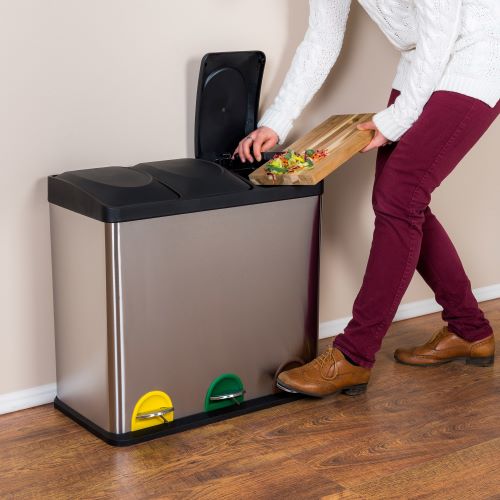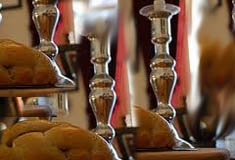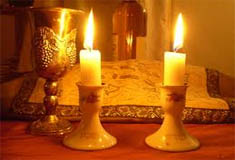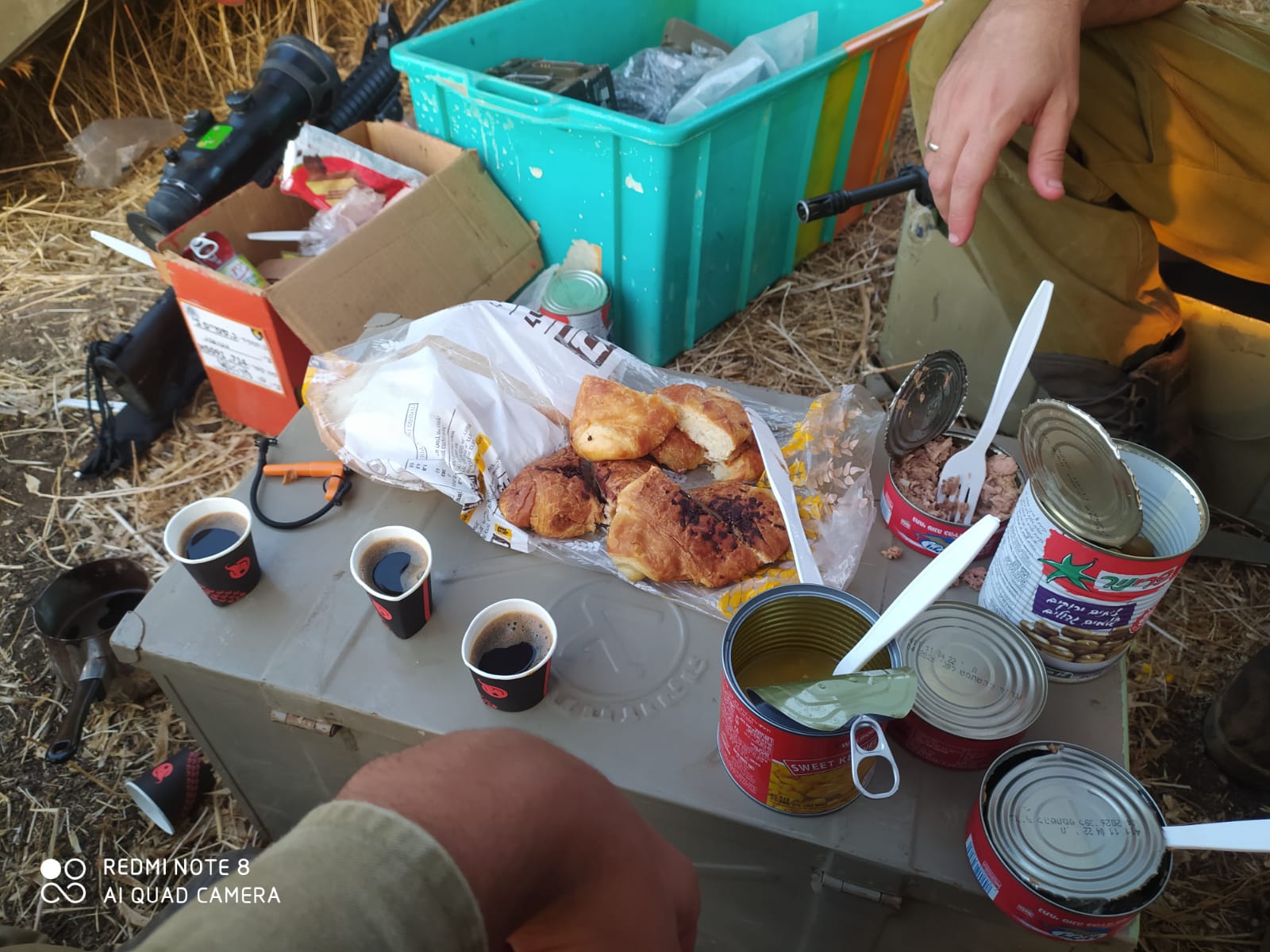The Complexity of Handling Garbage on Shabbat
הרב שי טחןיח אייר, תשפד26/05/2024Some activities we engage in on Shabbat may seem innocent, but they're actually more complex than we realize. Surprisingly, handling garbage is one such activity
תגיות:מוקצהאשפהשבת
צילום: freepik
Some activities we engage in on Shabbat may seem innocent, but they're actually more complex than we realize. Surprisingly, handling garbage is one such activity. While it may appear harmless, it can actually involve several Shabbat violations, including tying, preparing for weekdays, and issues related to muktzeh.
Chazal established the concept of muktzeh, which restricts moving certain items on Shabbat. Muktzeh items are classified into several categories, with each having specific rules. Garbage typically falls under the category of "muktzeh machmat gufo," which refers to objects that have no inherent use and are not considered utensils or food.
machmat gufo," which refers to objects that have no inherent use and are not considered utensils or food.
Let's briefly revisit the laws of muktzeh to get a clearer understanding of where garbage falls.
Categories of Muktzeh:
Here are some key categories of muktzeh:
1. Muktzeh Machmat Gufo (Intrinsically Muktzeh):
- Items with no inherent use, such as stones, money, raw food that can't be eaten as is, and garbage.
- These items are generally not allowed to be moved at all on Shabbat.
2. Muktzeh Machmat Chisaron Kis (Valuable Items):
- Items that are valuable and therefore not used on Shabbat for fear of damage or loss, such as expensive tools or collectibles.
- These are also not allowed to be moved on Shabbat.
3. Kli She'Melachto L'Issur (Tools Used for Prohibited Activities):
- Tools whose primary use involves activities prohibited on Shabbat, like hammers or pens.
- These can be moved if needed for a permissible use (l'tzorech gufo) or if their place is needed (l'tzorech mekomo).
4. Muktzeh Machmat Mitzvah (Set Aside for a Mitzvah):
- Items designated for mitzvah purposes, such as a lulav or shofar, which may not be used for other purposes.
Dealing with Garbage on Shabbat:
While garbage is typically considered muktzeh machmat gufo, there are practical considerations and leniencies provided by the halacha:
- Graf Shel Re'i: If garbage creates a significant discomfort (e.g., it smells bad or is unsightly), it is permitted to move it out of the way. This is known as "graf shel re'i," a halachic provision that allows moving something that would otherwise be muktzeh because it causes a significant disturbance.
Now, let's get into the halacha of muktzeh in relation to garbage.
The halacha(שולחן ערוך סימן שח סעיף כט) distinguishes between trash that is edible for a person or even for animals if there are animals in town that will be able to consume it, and garbage that isn't able to be consumed by anyone. Some (ראה שש״כ פרק כ הערה צו)would also say that any food that was thrown into the garbage is already disgusting to the point that no one will eat it. Even disposable utensils such as plastic cups, forks, spoons, etc., that were thrown into the garbage are muktzeh, since no one, even a poor person in our time and age, will remove them to use them.
Therefore, while garbage is generally muktzeh machmat gufo, the discomfort it causes allows for certain leniencies, enabling its removal in a permissible manner on Shabbat.
There is another category, and that is the base that the muktzeh is on, which is relevant to our discussion since the garbage is in the can. The can itself, although it is a vessel, since it serves as the base for the garbage, is also muktzeh. This is called "basis l'davar ha'assur."
Basis L'Davar Ha'assur (Base for a Prohibited Item):
- Objects that serve as a base for muktzeh items, like a table with money on it.
- If the muktzeh item was on the base at the beginning of Shabbat and the base was intentionally designated to hold it, the base also becomes muktzeh.
Therefore, since the garbage bin is designed for holding garbage, it becomes a basis—a base—for the muktzeh and may not be moved. Although a basis can only become muktzeh if it had garbage in it ben hashmashot(משנ״ב סימן רסו סעיף כו) , here, since that is the purpose of the can, it becomes a basis even if garbage was placed in it on Shabbat. Thus, a garbage can may not be moved, and one can't bring the can from the kitchen to the dining room table to throw the garbage in it; rather, they must take the garbage from the dining room table to the can in the kitchen(הגרש"ז אורבעך הובא בארחות שבת ח״ב עמוד קנה) .
Thus, when the garbage bin is empty, its status is Kli She'Melachto L'Issur, and it can be moved only if needed elsewhere. However, once garbage is placed in it, it changes to become Muktzeh Machmat Gufo, and it cannot be moved at all. The garbage can cover may be lifted at any time, even if there is already garbage in the can, to throw garbage in it, since the cover is also considered Kli She'Melachto L'Issur(ארחות שבת ח״ב עמוד קעז) .
When the garbage bag is full and one needs to change it, then it's considered graf shel re'i, especially if it smells bad, and one may take the bag out of the house if there is an eruv. They can replace it with a new bag. While changing bags, a few cautions must be taken. One should not double tie the old bag as that is the melacha of קושר. One may not rip a new bag if it's attached to the other bags as this is the melacha of kore’a. Although some would not classify it as kore’a but other melachot such as makeh bepatish or metaken mana. Also, one may not take out the garbage or put in a new bag right before Shabbat ends, since it's considered preparing from Shabbat to weekday.
If one's garbage is attached to a drawer and in order to throw in it one needs to open the drawer, there is a distinction between two types of drawers. One is where the garbage is attached to the drawer and it moves together with the garbage when you open it. In such a case, if it's used for other things as well, such as to store items, then the drawer is not primarily made for the garbage and thus one may open it. However, a drawer that has the sole use for garbage is muktzeh, since by opening it not only is the garbage moved with it, but also the drawer becomes part of that garbage bin. If the garbage isn't attached to the drawer, it is permitted to be opened, similar to what we explained before about the cover of the garbage can.
Chazal established the concept of muktzeh, which restricts moving certain items on Shabbat. Muktzeh items are classified into several categories, with each having specific rules. Garbage typically falls under the category of "muktzeh

צילום: freepik
Let's briefly revisit the laws of muktzeh to get a clearer understanding of where garbage falls.
Categories of Muktzeh:
Here are some key categories of muktzeh:
1. Muktzeh Machmat Gufo (Intrinsically Muktzeh):
- Items with no inherent use, such as stones, money, raw food that can't be eaten as is, and garbage.
- These items are generally not allowed to be moved at all on Shabbat.
2. Muktzeh Machmat Chisaron Kis (Valuable Items):
- Items that are valuable and therefore not used on Shabbat for fear of damage or loss, such as expensive tools or collectibles.
- These are also not allowed to be moved on Shabbat.
3. Kli She'Melachto L'Issur (Tools Used for Prohibited Activities):
- Tools whose primary use involves activities prohibited on Shabbat, like hammers or pens.
- These can be moved if needed for a permissible use (l'tzorech gufo) or if their place is needed (l'tzorech mekomo).
4. Muktzeh Machmat Mitzvah (Set Aside for a Mitzvah):
- Items designated for mitzvah purposes, such as a lulav or shofar, which may not be used for other purposes.
Dealing with Garbage on Shabbat:
While garbage is typically considered muktzeh machmat gufo, there are practical considerations and leniencies provided by the halacha:
- Graf Shel Re'i: If garbage creates a significant discomfort (e.g., it smells bad or is unsightly), it is permitted to move it out of the way. This is known as "graf shel re'i," a halachic provision that allows moving something that would otherwise be muktzeh because it causes a significant disturbance.
Now, let's get into the halacha of muktzeh in relation to garbage.
The halacha(שולחן ערוך סימן שח סעיף כט) distinguishes between trash that is edible for a person or even for animals if there are animals in town that will be able to consume it, and garbage that isn't able to be consumed by anyone. Some (ראה שש״כ פרק כ הערה צו)would also say that any food that was thrown into the garbage is already disgusting to the point that no one will eat it. Even disposable utensils such as plastic cups, forks, spoons, etc., that were thrown into the garbage are muktzeh, since no one, even a poor person in our time and age, will remove them to use them.
Therefore, while garbage is generally muktzeh machmat gufo, the discomfort it causes allows for certain leniencies, enabling its removal in a permissible manner on Shabbat.
There is another category, and that is the base that the muktzeh is on, which is relevant to our discussion since the garbage is in the can. The can itself, although it is a vessel, since it serves as the base for the garbage, is also muktzeh. This is called "basis l'davar ha'assur."
Basis L'Davar Ha'assur (Base for a Prohibited Item):
- Objects that serve as a base for muktzeh items, like a table with money on it.
- If the muktzeh item was on the base at the beginning of Shabbat and the base was intentionally designated to hold it, the base also becomes muktzeh.
Therefore, since the garbage bin is designed for holding garbage, it becomes a basis—a base—for the muktzeh and may not be moved. Although a basis can only become muktzeh if it had garbage in it ben hashmashot(משנ״ב סימן רסו סעיף כו) , here, since that is the purpose of the can, it becomes a basis even if garbage was placed in it on Shabbat. Thus, a garbage can may not be moved, and one can't bring the can from the kitchen to the dining room table to throw the garbage in it; rather, they must take the garbage from the dining room table to the can in the kitchen(הגרש"ז אורבעך הובא בארחות שבת ח״ב עמוד קנה) .
Thus, when the garbage bin is empty, its status is Kli She'Melachto L'Issur, and it can be moved only if needed elsewhere. However, once garbage is placed in it, it changes to become Muktzeh Machmat Gufo, and it cannot be moved at all. The garbage can cover may be lifted at any time, even if there is already garbage in the can, to throw garbage in it, since the cover is also considered Kli She'Melachto L'Issur(ארחות שבת ח״ב עמוד קעז) .
When the garbage bag is full and one needs to change it, then it's considered graf shel re'i, especially if it smells bad, and one may take the bag out of the house if there is an eruv. They can replace it with a new bag. While changing bags, a few cautions must be taken. One should not double tie the old bag as that is the melacha of קושר. One may not rip a new bag if it's attached to the other bags as this is the melacha of kore’a. Although some would not classify it as kore’a but other melachot such as makeh bepatish or metaken mana. Also, one may not take out the garbage or put in a new bag right before Shabbat ends, since it's considered preparing from Shabbat to weekday.
If one's garbage is attached to a drawer and in order to throw in it one needs to open the drawer, there is a distinction between two types of drawers. One is where the garbage is attached to the drawer and it moves together with the garbage when you open it. In such a case, if it's used for other things as well, such as to store items, then the drawer is not primarily made for the garbage and thus one may open it. However, a drawer that has the sole use for garbage is muktzeh, since by opening it not only is the garbage moved with it, but also the drawer becomes part of that garbage bin. If the garbage isn't attached to the drawer, it is permitted to be opened, similar to what we explained before about the cover of the garbage can.
הוסף תגובה
עוד מהרב שי טחן
עוד בנושא הלכה







.jpg)